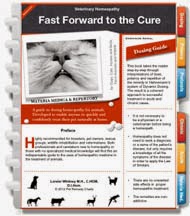What to do if the organs are showing and the “secret” household item you should have on hand that could save your pet.
Abdominal Wounds are common pet emergencies. Frequently small dogs and cats with severe abdominal wounds receive them following an attack by a large dog. In many cases, if a pet owner had been aware of what to do, they could have saved their dog or cat’s life.
What to do if your pet ever has a serious abdominal injury...
SIGNS
The abdomen (belly) holds most of the important internal organs. It is protected by 3 layers of muscle, plus the fat and skin, but is vulnerable to injury. A small dog or cat can easily have his entire abdomen punctured by a large dog bite. The only thing visible to you may be small punctures on the surface of the skin.
These are the most important signs which signal immediate veterinary care:
- Shock
- Pain
- Vomiting
- Evidence of injury (i.e. bruising, swelling, local pain)
- Blood in the urine if the bladder or kidneys are injured
- Blood in the stool or around the anus if the large bowel has been injured Abnormal swelling may indicate a hernia particularly in the groin or flanks
- Protrusion of intestines if the abdominal wall has been torn
A bite, car accident or foreign object has penetrated the abdomen (belly). Other
common ways include falling and large animal kicks.
SOLUTIONS
CALL THE VET RIGHT AWAY. Serious abdominal injuries need to be treated by a veterinarian.
CHECK FOR SHOCK
A pet in shock will act weak or sleepy. The most common sign I see are pale gums and tongue- in some dogs and cats the eyelids droop. Severe shock can result in death in as little as 15 minutes. If you suspect this, then transport to the emergency vet right away. Wrap your pet in a blanket to keep him warm, and put a few drops of honey on his gum’s, give the animal Bach Rescue Remedy and drive immediately.
APPLY PRESSURE
In bleeding wounds, you want to apply direct pressure with a clean cloth or gauze pad. If the blood seeps through, re-apply a second cloth- removing it can break up a forming clot.
CLIP THE FUR
This is advised to do so long as the wound only appears superficial and doesn’t penetrate into the abdomen. Use clippers or blunt scissors. I always advise to first fill the wound with K-Y jelly to keep the hair from adhering to the wound.
CLEAN THE WOUND
I find that it is easiest to use warm running water. The best thing is using a handheld showerhead. After gently spraying, use a damp cloth soaked with antiseptic solution (chlorhexidine) and gently wipe around the wound. If you are treating the wound at home, then perform this hydrotherapy twice daily for 3-5 days.
WHAT TO DO IF INTERNAL ORGANS ARE SHOWING
This seldom happens, but if it does you need to know what to do.
RINSE THE ORGANS
First rinse the organs with saline solution- if you don’t have this lukewarm tap water is fine. This cleans the organs and keeps the tissue moist and healthy.
PUT THE ORGANS BACK
These can be gently pushed back into the abdominal cavity after being rinsed. First soak gauze pads or a cloth in either sterile saline solution or lukewarm tap water. DON’T use your bare hands. Apply firm pressure and place the organs through the hole or tear in the abdomen. If you can’t get them to go in easily, then leave them on the moist towel. WRAP the abdominal cavity and the organs with a belly band. This is easiest with plastic wrap (Saran Wrap - the secret household item we mentioned above). It just needs to be tight enough to hold everything in place till you can get to the vet or emergency clinic.
I have been educating pet owners on how to care for their pet’s at home for years by using the natural remedies and treatments found on Pet Remedy Charts, and homeopathic treatments from the book, Fast Forward to the Cure, Veterinary Homeopathy for dogs, cats, horses, birds, pet rats and backyard chickens. It’s not complicated; it’s easy when you follow the simple step by step instructions.




No comments:
Post a Comment